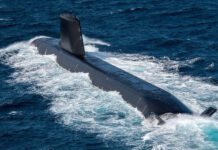As the campaign in Helmand faces tough opposition from outnumbered and outgunned Taliban, NATO is facing a new threat – this time an internal one. The alliance is fearing a domino effect could follow the Dutch planned pullout from Uruzgan, following the resignation of the Dutch government, announced by Prime Minister Jan Peter Balkenende yesterday (20 February 2010). About 2,000 Dutch military personnel stationed in Uruzgan are expected to withdraw from Afghanistan by August, if the decision is not reversed.
The two-year Dutch military mission began in 2006 and was due to end in July 2008. Thereafter in 2008, it was extended by additional two years and will officially end by August 1, 2010. All troops should be back before next year. Sofar NATO has made no preparations for a change of command in Uruzgan. As the Netherlands have previously suffered from problematic change of the guard in Srebrenica, Bosnia, where NATO left the 3rd Dutch Battalion (Dutchbat III) without relief after their mission ended, the Dutch are now worried this could happen again. Sources in NATO said they respect the Dutch debate over the mission in Uruzgan, but consider the best way forward would be a small Dutch presence in Uruzgan.
While the Uruzgan province, located north of Helmand is generally quiet, the alliance fear a domino effect could evolve of the Dutch decision, drawing other countries where public opinion is turning against the Afghan campaign to pull back as well. Of particular concern is Canada, which suffered the biggest proportional casualty rate in the conflict, and is committed to withdrawing its 2,800 troops by the end of 2011. Australia, which has more than 1,000 Australian troops deployed, sofar refused to take over the lead role in Uruzgan. The decision comes at a time when NATO is demanded to share the burden of increased operations in the country, sending 10,000 additional troops to support 30,000 troops sent by the U.S.
Another blow to NATO’s war effort happened today in Uruzgan, after 27 Afghan civilians were killed in a NATO air strike on a convoy. NATO officials said the attack was directed at a suspected insurgent convoy. Following the attack the troops realized there were wemen and children among the dead. The convoy was suspected to contained Taliban insurgents on their way to support military activities in the area. Uruzgan is located north of Helmand, where the battle rages between Taliban and NATO forces, around the village of Marjah.
Defense Update thanks VHJM van Neerven, editor-in-chief, VNC communication counsel for this timely update.
















